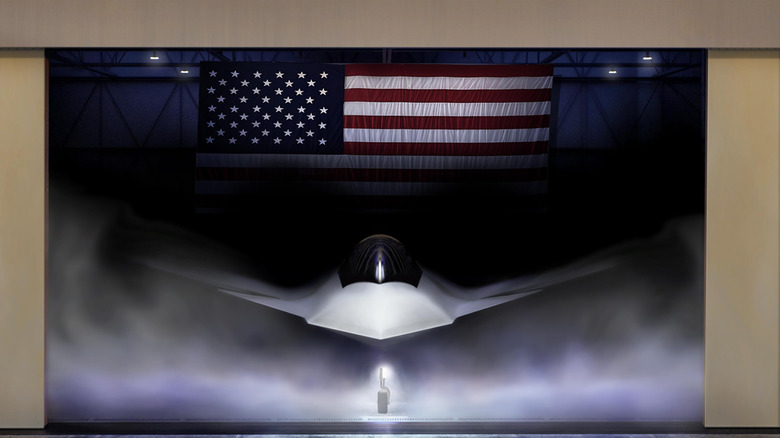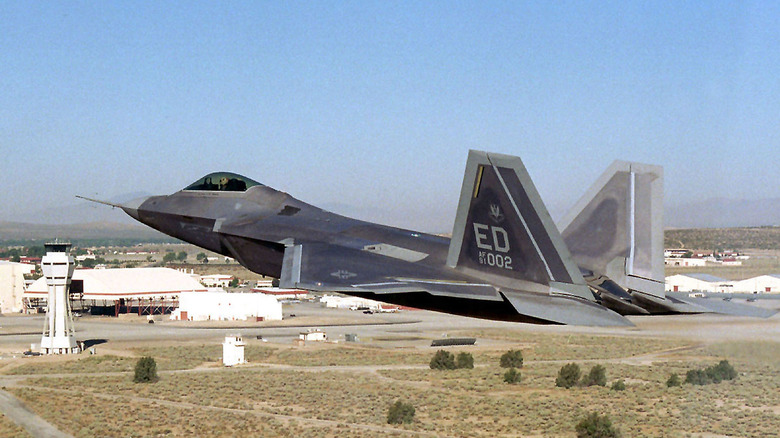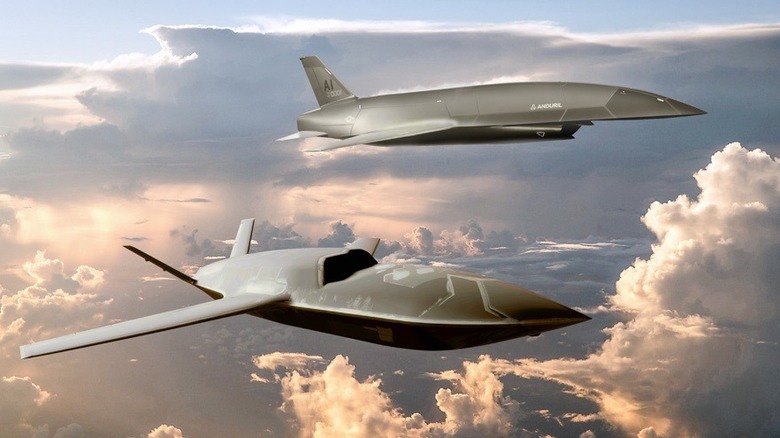Boeing's F-47 Top Speed: How Fast Will This Fighter Jet Be?
The U.S. Air Force has been making decisions about what future jet fighters will look like. The contest between Boeing and Lockheed to design and build the Next Generation Air Dominance (NGAD) aircraft was shaped in particular by the challenging question: Would the new fighter be crewed or not? Another important parameter was not so challenging — the new aircraft would be fast. Boeing's winning bid resulted in the F-47 Gen-6 fighter jet. Since the fighter has yet to enter active service, specifics on speed are limited.
Since the F-47 is going to be first and foremost an Air Dominance aircraft, we can expect it to be somewhere close to the Raptor and Strike Eagle range – which is around Mach 2. The president claimed it would go, "over two," at its unveiling, according to the New York Times. Its top speed, however, is partly determined by its altitude. Jets flying near sea level travel at slower speeds than at higher altitudes because of the atmosphere's thickness. There is simply more air to move out of the way, and jet engines are more efficient at higher altitudes.
The F-22 Raptor's top speed is a good example. At sea level it can reach 921 mph, or Mach 1.21. Its Mach 2-range top end comes in at much higher altitudes. The F-47's top speed will be set for both ranges as well, but another parameter comes into play. That is, not only how high, but how fast and for how long.
F-47 and supercruise
One feature the F-47 is likely to have is supercruise. Flying at full power for extended periods is possible, but not recommended due to increased fuel consumption, engine wear-and-tear, and especially an increased radar signature. Most jet aircraft are designed with a cruising speed in mind to be able to find a compromise between these limitations and the need for speed. For 5th Generation fighters, one of the holy grails of performance was supercruise, or cruising at above the speed of sound without using the afterburner.
The F-22 is one of the few jets in service that can supercruise, traveling approximately Mach 1.5 without its afterburners. Will the F-47 have supercruise? At the moment, subsonic cruise is a possibility, as the competition for the jet's cutting-edge engine is not done. Regardless, the F-47 will need the ability to travel long range, if current expectations remain. It's seen as an asset in any competition with China, which has its own 6th generation fighter under development.
The AP reported that a review of the NGAD program was issued in 2024 to determine if it was needed. It found that in a conflict with China, a next generation fighter would be needed.
The F-47 and its wingman drone
While the F-47's top speed and stealth are making headlines, there is another feature that will play a huge role in the new fighter jet's use. A pilot, flying the jet themself, will be accompanied by uncrewed wingmen — drones that are networked to the main aircraft. The USAF has used preprogrammed drones since the 1960s, when the D-21 was mounted on the SR-71 spy plane.
Today, NATO aircraft are networked to others using Link 16, a secure communication network that lets pilots transmit critical tactical data to each other. Pakistan recently displayed how impressive its J-10 fighter jet is with its network capabilities against the Indian Air Force (IAF).
The F-47 will fly alongside what are called collaborative combat aircraft (CCA), combining drone and networking technologies along with autonomous operation. The Air Force announced it will test two different models, the YFQ-42A — under development by General Atomics — and the YFQ-44A — under way by Anduril – in 2026 at Beale AFB in California.


